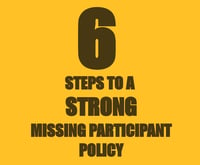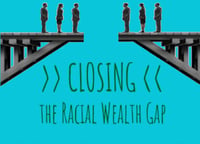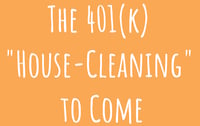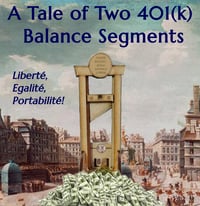Consolidation Corner
-
Blog
- 401k Cash Outs
- 401k Consolidation
- 401k Plan Termination
- America's Mobile Workforce
- Assisted Roll-in
- Auto Enrollment
- Auto Portability
- Auto Portability Simulation
- Automatic Roll-In
- Automatic Rollover
- Automatic Rollovers
- Boston Research Technologies
- CARES act
- Common Mistakes
- DIY Roll-In
- DOL Advisory Opinion
- EBRI
- Employee Benefit News
- ERISA Advisory Council
- Financial Services Roundtable
- Financial Wellness
- How-To
- In-Plan Consolidation
- Leakage
- Lifetime Plan Participation
- Lost Participants
- Managed Portability
- Mandatory Distributions
- MarketWatch
- Missing Participant IRA
- Missing Participants
- National Retirement Savings Cash Out Clock
- Participant Transition Management
- PLANSPONSOR
- Portability Services Network
- PSCA
- Public Policy
- RCH Services
- Retirement Income
- Retirement Plan Portability
- retirement research
- Retirement Savings Consolidation
- Retirement Savings Portability
- Roll-In
- Safe Harbor IRA
- Saver's Match
- Security
- Small Accounts
- Stale Dated Checks
- Synthetic Tenure
- Uncashed Check Services
- Uncashed Distribution Checks
- Video
- Webcast
- What is a Missing Participant?
Mandatory Distributions
Consolidation Corner Blog
Consolidation Corner is the Retirement Clearinghouse (RCH) blog, and features the latest articles and bylines from our executives, addressing important retirement savings portability topics.
Why Preserving Small Balances Matters (and How Auto Portability Helps)
 The preservation of small-balance 401(k) accounts – particularly those under $7,000 and subject to 401(k) plans’ automatic rollover provisions – represents an important challenge for America’s retirement system.
The preservation of small-balance 401(k) accounts – particularly those under $7,000 and subject to 401(k) plans’ automatic rollover provisions – represents an important challenge for America’s retirement system.
When job-changing workers cash out or abandon these accounts in dead-end safe harbor IRAs, they lose not just immediate savings, but can forego decades of compounded growth – reducing their odds of a comfortable or timely retirement.
Come On In, The Water’s Fine
 Sometimes it seems, the universe sends you a signal that you haven’t been wasting your time.
Sometimes it seems, the universe sends you a signal that you haven’t been wasting your time.
For me, one such signal arrived in the form of a June 2nd, 2025 opinion piece by PensionBee executive Helene O’Brien, as well as industry reporting on comments from CEO Romi Savova, both drawing attention to the participant-unfriendly nature of some safe harbor IRAs, which house the forced-out retirement savings of separated participants with balances less than $7,000.
The Compelling Case for Women and Auto Portability
 Auto portability will deliver broad-based benefits to America’s workforce, but research has shown that the new feature disproportionately benefits under-saved and underserved demographic segments, including minorities, women, lower-income and younger workers.
Auto portability will deliver broad-based benefits to America’s workforce, but research has shown that the new feature disproportionately benefits under-saved and underserved demographic segments, including minorities, women, lower-income and younger workers.
Dressing Up Traditional Automatic Rollovers
 Recently, we’ve read – mainly via paid promotions – about the existence of so-called “world-class” automatic rollover IRA services, which seem to be little more than old-school, traditional automatic rollover IRAs laying claim to unspecified, premium features.
Recently, we’ve read – mainly via paid promotions – about the existence of so-called “world-class” automatic rollover IRA services, which seem to be little more than old-school, traditional automatic rollover IRAs laying claim to unspecified, premium features.
Six Steps to a Strong Missing Participant Policy
 Missing participants, defined as individuals who have become disconnected from their retirement savings – often through their own inaction – are a significant challenge that has long plagued defined contribution plans. Unfortunately, the responsibility for locating these persons falls squarely on the shoulders of plan sponsors.
Missing participants, defined as individuals who have become disconnected from their retirement savings – often through their own inaction – are a significant challenge that has long plagued defined contribution plans. Unfortunately, the responsibility for locating these persons falls squarely on the shoulders of plan sponsors.
Four Retirement Initiatives Vital to Closing the Racial Wealth Gap
 Policymakers and stakeholders in America’s defined contribution system have made important progress in advancing initiatives that could help to close the large racial wealth gap. While much of the groundwork has been laid, it will ultimately fall to retirement plan sponsors to make the difference by supporting four key retirement initiatives that will generate increased wealth and enhance retirement security for millions of America’s minority workers.
Policymakers and stakeholders in America’s defined contribution system have made important progress in advancing initiatives that could help to close the large racial wealth gap. While much of the groundwork has been laid, it will ultimately fall to retirement plan sponsors to make the difference by supporting four key retirement initiatives that will generate increased wealth and enhance retirement security for millions of America’s minority workers.
The 401(k) “House-Cleaning” to Come
 The increase in the automatic rollover threshold from $5,000 to $7,000, as provided for in section 304 of the SECURE 2.0 legislation, will become effective for mandatory distributions made after December 31, 2023.
The increase in the automatic rollover threshold from $5,000 to $7,000, as provided for in section 304 of the SECURE 2.0 legislation, will become effective for mandatory distributions made after December 31, 2023.
What will be the impact of these provisions, if fully embraced by plan sponsors? One thing is certain – on both a one-time and ongoing basis, far more terminated participants will be subject to the automatic rollover provisions of their former-employers’ plans.
Dialing Up the Intensity of Missing Participant Searches
 When it comes to locating missing retirement plan participants, there’s no substitute for an effective electronic, or “e-search.” However, retirement plan sponsors will inevitably encounter scenarios where periodic e-searches alone will not suffice.
When it comes to locating missing retirement plan participants, there’s no substitute for an effective electronic, or “e-search.” However, retirement plan sponsors will inevitably encounter scenarios where periodic e-searches alone will not suffice.
The Big Shift Towards Auto Portability
 To quote Ferris Bueller: “Life moves pretty fast. If you don't stop and look around once in a while, you could miss it.”
To quote Ferris Bueller: “Life moves pretty fast. If you don't stop and look around once in a while, you could miss it.”
For those accustomed to a glacial pace of change in the world of retirement, you could be forgiven if you’ve missed two very recent, tectonic shifts toward the system-wide adoption of auto portability, the new default plan feature that automatically moves small balance retirement savings forward as participants change employers, saving them time and money, while dramatically reducing cashout leakage.
A Tale of Two 401(k) Balance Segments
 It was the best of times, it was the worst of times.
It was the best of times, it was the worst of times.
For job-changing 401(k) participants with balances greater than $15,000, it was the spring of financial wellness, as the bulk of their retirement savings would remain intact. For less-aristocratic 401(k) savers with balances below $15,000, it was the winter of despair, as most of their savings would be lost on the cashout chopping block or forcibly exiled to a safe harbor IRA, where more savings would perish.
-
Blog
- 401k Cash Outs
- 401k Consolidation
- 401k Plan Termination
- America's Mobile Workforce
- Assisted Roll-in
- Auto Enrollment
- Auto Portability
- Auto Portability Simulation
- Automatic Roll-In
- Automatic Rollover
- Automatic Rollovers
- Boston Research Technologies
- CARES act
- Common Mistakes
- DIY Roll-In
- DOL Advisory Opinion
- EBRI
- Employee Benefit News
- ERISA Advisory Council
- Financial Services Roundtable
- Financial Wellness
- How-To
- In-Plan Consolidation
- Leakage
- Lifetime Plan Participation
- Lost Participants
- Managed Portability
- Mandatory Distributions
- MarketWatch
- Missing Participant IRA
- Missing Participants
- National Retirement Savings Cash Out Clock
- Participant Transition Management
- PLANSPONSOR
- Portability Services Network
- PSCA
- Public Policy
- RCH Services
- Retirement Income
- Retirement Plan Portability
- retirement research
- Retirement Savings Consolidation
- Retirement Savings Portability
- Roll-In
- Safe Harbor IRA
- Saver's Match
- Security
- Small Accounts
- Stale Dated Checks
- Synthetic Tenure
- Uncashed Check Services
- Uncashed Distribution Checks
- Video
- Webcast
- What is a Missing Participant?
